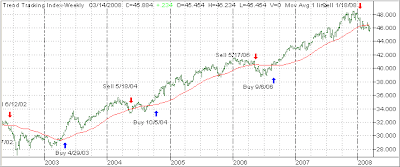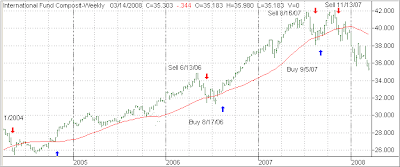 Not only have investments in Subprime slime wreaked havoc with banks and hedge funds, a ridiculous amount of leverage has made the problem far worse and added to the rather sudden demise of various institutions. The latest victim was Carlyle Capital, which went from recently owning some $22 billion in mortgage securities to now expecting that lenders will seize its assets.
Not only have investments in Subprime slime wreaked havoc with banks and hedge funds, a ridiculous amount of leverage has made the problem far worse and added to the rather sudden demise of various institutions. The latest victim was Carlyle Capital, which went from recently owning some $22 billion in mortgage securities to now expecting that lenders will seize its assets.
Lenders are as much to blame for having to take possible losses since they provided Carlyle Capital with $20 for every dollar of initial capital. The mathematical formula is very simple:
Excessive Leverage + Subprime Investments = Collapse
I am sure that we will not have heard the last of this hedge fund debacle and there will be more to come despite S & P’s assurance that the “End of Subprime mortgage write-downs may be in sight.”
The operative word here is “may.” Yeah right, tip of the iceberg is more like it. Bear Stearns appears to be the next victim. What about the upcoming difficulties with Alt-A and Pay Option ARM mortgages, which are due to reset by the millions over the next few years. I hope I am wrong, but I am pretty sure that most financial institutions have not yet disclosed all of their potential write-downs.
On a positive subject, reader Bradley submitted the latest information on the federal tax rebate:
President George Bush said each one of us would get a $600.00 tax rebate. It was previously slated to be $800.00, but they dropped it to a $600.00 tax rebate because of various budget problems.
Now, if we spend that money at Wal-Mart, all the money will go to China, if we spend it on computers, most of the money will go to Korea or India.
If we spend it on gasoline it will all go to the Arabs—and none of these scenarios will help the American economy.
We need to keep that money here in America—so the only way to keep it here at home is to drink beer, gamble, or spend it on prostitution. Currently it seems that these are the only businesses still left in the U.S.
To that I am pleased to add that (former) NY Governor Spitzer is apparently leading this charge on the highest level to support these efforts.






